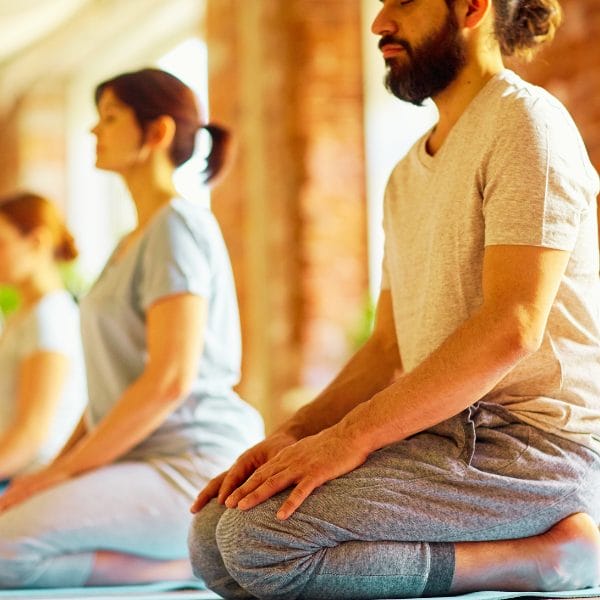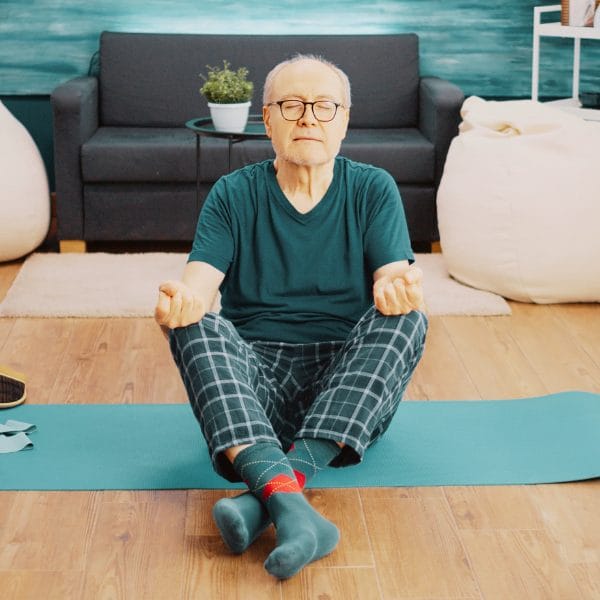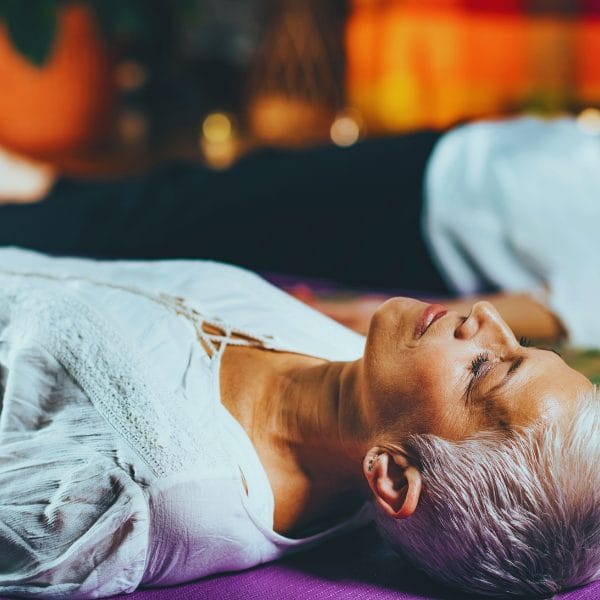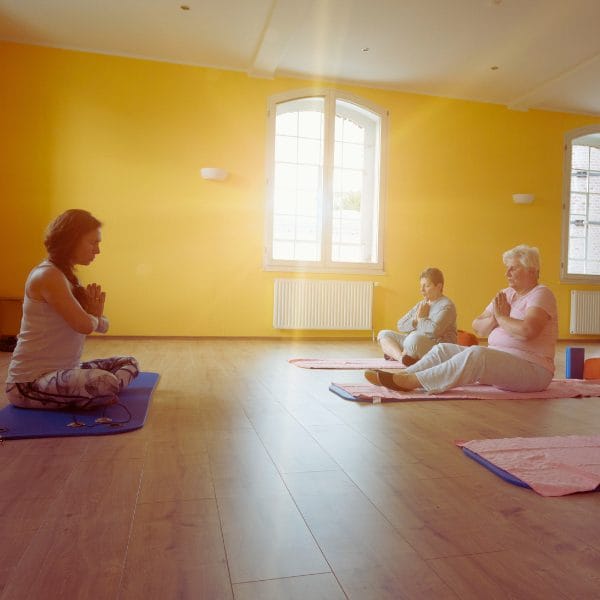Meditation Posture: The Best Positions For You To Relax And Meditate In
When it comes to meditation, posture is key. If you’re not in the right position, you won’t be able to relax and focus on your meditation. In fact, you might even find yourself getting more frustrated and tense the longer you try to meditate.
Why is your posture important in meditation?
Your meditation posture is essential because it helps you to focus your attention on your meditation and avoid distractions. It also allows you to relax your body and mind, which is necessary for successful meditation practice.
PostureGeek.com Tweet

Your meditation posture is essential because it helps you to focus your attention on your meditation and avoid distractions. It also allows you to relax your body and mind, which is necessary for successful meditation practice.
The purpose of meditation is to focus your attention and achieve a state of inner peace.
The correct meditation posture will help you to do this by:
- Allowing your muscles to relax: When you’re in a good meditation posture, your muscles should be able to relax completely. This means you won’t have any unnecessary tension in your body that could distract you from meditation.
- Keeping your spine straight: A straight spine is vital for meditation because it allows you to breathe deeply and evenly. Deep breathing is integral to meditation, as it helps to focus and calm the mind.
- Opening up your chest: An open chest allows you to take deep breaths, which is important for meditation. It also helps to keep your energy levels up.
- Aligning your head, neck, and shoulders: When your head, neck, and shoulders are aligned, it allows your whole body to relax. This alignment also helps to improve your breathing and prevent pain in the neck and shoulders.
Different Meditation postures

There are many different meditation postures that you can try. The most important thing is to find a posture that is comfortable for you and allows you to keep your spine straight.
Some of the most popular seated meditation positions include:
Lotus position:
The lotus position is a classic meditation posture. To achieve this posture, sit with your legs crossed and your hands resting in your lap with your palms up.
Make sure that your spine is straight and your shoulders are relaxed. You can also place a pillow under your knees for support.
Half Lotus position:
If the full lotus posture is not possible for you, then you can try the half lotus posture instead. To do this, sit with one leg crossed over the other and your hands resting in your lap. Again, ensure your spine is straight, and your shoulders are relaxed.
Burmese position:
The Burmese position is similar to the lotus posture, but with both feet placed flat on the ground in front of you. This posture is a good option if you have trouble crossing your legs in the lotus position. Again, ensure that your back is straight and your shoulders are relaxed. You can also place a pillow under your knees for support.
Seiza position:
The seiza position is a traditional Japanese meditation posture. To achieve this posture, sit on your heels with your legs tucked underneath you. Place your hands palm-up in your lap and make sure that your back is straight. This posture can be uncomfortable for some people, so you may want to place a pillow under your bottom for support.
Kneeling meditation posture:
The kneeling posture is similar to the seiza position, but with your legs tucked underneath you and your buttocks resting on your heels. This posture is often used in Zen meditation and can be quite comfortable once you get used to it. Make sure that your back is straight and your shoulders are relaxed.
Chair Meditation:
If you can’t sit on the floor or have trouble keeping your spine straight, you can also meditate in a chair. To do this, sit in a comfortable chair with your feet flat on the floor and your hands resting in your lap. Make sure that your back is straight and your shoulders are relaxed. You can also place a pillow or blanket behind your lower back for support.
Standing and lying down meditation positions: alternatives to sitting meditation positions.

Standing meditation pose:
If you want to meditate but have trouble sitting still, you can also try a standing meditation posture. To do this, stand with your feet shoulder-width apart and your hands at your sides. Make sure that your spine is straight and your shoulders are relaxed. You can also place your hands in a prayer position in front of your chest.
Walking meditation:

Walking meditation is a great way to get some exercise while you meditate. To do this, walk slowly and focus on your breath. You can also try counting each step as you take it.
What if I can’t sit or stand?

If you have trouble sitting or standing for long periods, there are other meditation postures that you can try. For example, you can lie on your back with a pillow under your knees for support. You can also try meditation while lying on your side or in the fetal position.
No matter what meditation position you choose, the most important thing is to be comfortable and to keep your spine straight. Once you find a posture that works for you, stick with it and don’t be afraid to experiment until you find the perfect fit.
Keys to meditation posture

Alignment of the spine:
The most important thing to remember when meditation is to keep your spine straight. An aligned spine will help you to maintain good posture and to avoid pain in the back or neck.
Hand position during meditation:
There are many different hand positions that you can try during meditation. Still, the most important thing is to be comfortable. You can place your hands on your lap, on your knees, or in a prayer position.
Relaxation of the body:
Another essential thing to remember is to relax your whole body when you meditate. Letting go of any muscle tension and simply allowing yourself to be calm and still.
The mouth during meditation:
It is important to keep your mouth closed during meditation to avoid distractions. You can also try placing your tongue against the roof of your mouth to help you focus.
The eyes during meditation:
Some people like to keep their eyes open during meditation, while others prefer to close them. There is no right or wrong answer, so do whatever feels comfortable for you.
A stiff meditation position is not good:
One common mistake people make when meditation is to try and sit in a stiff, formal position. However, this can actually be quite harmful to your body. Instead, focus on relaxing your whole body and letting go of any tension. This will help you to achieve more deep and effective meditation.
Excessive movement while meditating:
Another common mistake is to fidget or move around during meditation. Movements can be quite distracting and make it difficult to focus on your breath. Instead, try to sit still and simply focus on your breath. If you find yourself fidgeting, return your attention to your breath and the present moment.
Using a meditation bench:
If you find it challenging to sit on the ground, you may want to try using a meditation bench. The bench is a small, low stool that allows you to sit with your legs crossed without having to put all of your weight on your feet. This can be a great way to meditate if you have trouble sitting on the ground for long periods.
Staying flexible for best meditation practice:
Maintaining a flexible body will allow your best chance to sit for long periods. A loose and relaxed body will also help with the meditation process. Keeping your legs and hips open will allow you to maintain your sitting posture for longer.
You can achieve a flexible body by practicing yoga, Pilates, or stretching before you meditate.
Breathing:
Finally, remember to focus on your breath when you meditate. This will help to clear your mind and to focus on the present moment. Count each inhalation and exhalation as you breathe deeply and evenly.
Getting started with meditation

If you’re new to meditation, there are a few things that you can do to get started. First, find a quiet place where you won’t be interrupted. Then, sit in a comfortable position and focus on your breath.
Once you feel calm and relaxed, begin to meditate. Remember to focus on your breath and to keep your spine straight. If you find your mind wandering, return your attention to your breath. With practice, you’ll achieve more profound levels of meditation.
Finding a meditation teacher
If you’re interested in learning meditation, it can be helpful to find a teacher. A teacher can help you learn the basics of meditation and offer guidance and support. There are many different types of meditation teachers, so it’s essential to find one that’s right for you. You can also find meditation classes offered at many community centers or yoga studios.
Finally
Meditation is a great way to relax and focus on the present moment. Finding the perfect meditation posture for you can make your meditation practice even more effective. Experiment with different poses until you find one that feels comfortable and natural for you. Remember to keep your spine straight and to focus on your breath as you meditate. With a bit of practice, you’ll be meditation like a pro in no time!
PLEASE NOTE
PostureGeek.com does not provide medical advice. This information is for educational purposes only and is not intended to be a substitute for professional medical attention. The information provided should not replace the advice and expertise of an accredited health care provider. Any inquiry into your care and any potential impact on your health and wellbeing should be directed to your health care provider. All information is for educational purposes only and is not intended to be a substitute for professional medical care or treatment.
